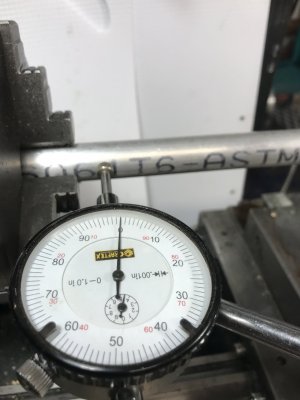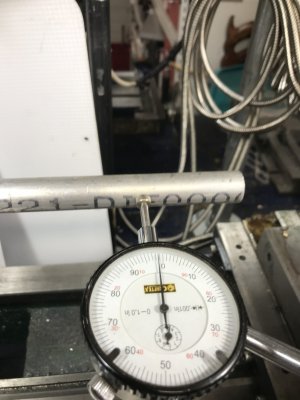opensourcefan
OSF
Okay, here's another crazy one. My soon to be reviewed lathe is cutting a taper. In 3" it will taper .010" (OD). The cross slide was locked during cutting. Depth of cut has no effect on taper. Changing tool posts did nothing. Compound is also locked (tight).
The machine is not level but the bed is level (no twist).
When I questioned it, I was advised to tighten up the carriage. Specifically the carriage lock bolt and the clamp bolt at the rear of the carriage.
I'm not imagining thinking that these two so called solutions are crazy and not related right?
Seems to me the headstock is out of alignment. I suppose they are skirting around reality knowing the whole machine will need to be disassembled to tweak it. The two rear headstock bolts are buried inside the casting.
The machine is not level but the bed is level (no twist).
When I questioned it, I was advised to tighten up the carriage. Specifically the carriage lock bolt and the clamp bolt at the rear of the carriage.
I'm not imagining thinking that these two so called solutions are crazy and not related right?
Seems to me the headstock is out of alignment. I suppose they are skirting around reality knowing the whole machine will need to be disassembled to tweak it. The two rear headstock bolts are buried inside the casting.





